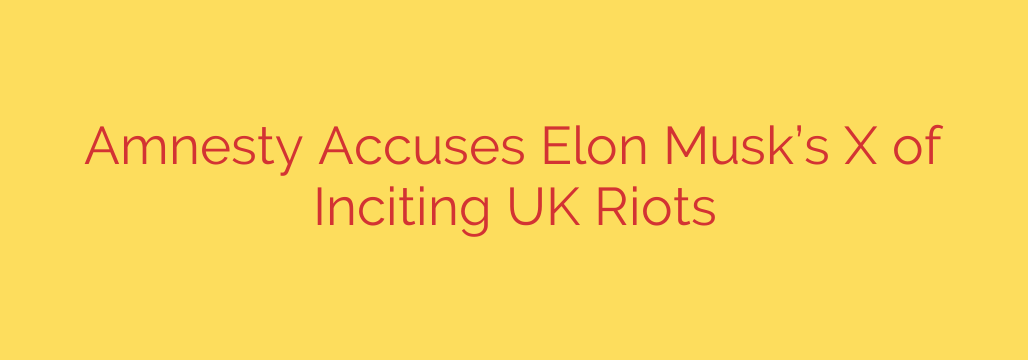
Is X Fueling Social Unrest? Examining the Platform’s Role in Recent UK Riots
In an age where online discourse can spill onto the streets in minutes, the responsibility of social media platforms has never been more critical. A recent, troubling report has drawn a direct line between policy changes at X, the platform formerly known as Twitter, and the incitement of violent riots in the United Kingdom, raising serious questions about public safety in the digital era.
The allegations are stark: that since its acquisition by Elon Musk, the platform’s significant changes to content moderation have created a fertile ground for hate speech and disinformation, which in turn has fueled real-world violence. This isn’t just about heated arguments online; it’s about organized unrest that threatens community safety.
A New Era of Moderation: What Changed at X?
Following the takeover, X underwent a radical transformation guided by a new “free speech” philosophy. This led to several key operational shifts that critics argue have compromised the platform’s safety mechanisms.
First and foremost were the dramatic cuts to the platform’s trust and safety teams. These specialized teams were responsible for monitoring and acting on harmful content, from hate speech to direct threats of violence. With their numbers significantly reduced, the ability to proactively and swiftly manage dangerous content has been severely diminished.
Simultaneously, the platform reinstated thousands of previously banned accounts, some of which were removed for spreading hate speech and dangerous conspiracy theories. Coupled with loosened content moderation policies, this has allowed inflammatory rhetoric to flourish with fewer consequences. The once-coveted verification system was also overhauled, making it harder for users to distinguish credible sources from malicious actors hiding behind a purchased blue checkmark.
From Online Posts to Offline Violence
The real-world impact of these changes has been chillingly demonstrated. Reports have highlighted how X was used to spread false information and racist narratives that directly preceded violent protests and riots in the UK.
For example, far-right groups allegedly used the platform to circulate disinformation about asylum seekers, stoking fear and anger that culminated in violent clashes outside a hotel housing them. Experts argue that the platform’s algorithm played a key role in this escalation. By prioritizing engagement, the system may have inadvertently amplified the most divisive and inflammatory content, pushing it into the feeds of more users and accelerating the cycle of outrage.
This creates a dangerous feedback loop where misinformation and disinformation are not just present but actively promoted, making it easier for bad actors to organize and mobilize followers for the specific purpose of causing offline harm.
How to Protect Yourself and Your Community Online
While the debate over platform responsibility continues, users are on the front lines. Navigating this volatile digital space requires vigilance and a proactive approach to information consumption. Here are a few actionable security tips:
- Verify Before You Share: Always question the source of information, especially if it’s emotionally charged. Cross-reference claims with established, reputable news outlets before sharing them.
- Report Harmful Content: While moderation teams are smaller, reporting harmful posts is still the most direct way to flag them for review. Use the platform’s built-in reporting tools to report tweets that incite violence or spread hate.
- Curate Your Feed Aggressively: Don’t hesitate to use the “Mute” and “Block” features. Mute keywords associated with toxic discourse and block accounts that consistently post inflammatory or false information. This helps create a healthier, more reliable information environment for you.
- Avoid Engaging with Trolls: Responding to hateful or false content, even to debunk it, can increase its visibility through the algorithm. The best course of action is often to report, block, and move on.
The link between social media governance and public safety is undeniable. The situation with X serves as a critical case study in the ongoing struggle to balance free expression with the non-negotiable need to prevent real-world violence. As this digital landscape continues to evolve, the responsibility of tech platforms to protect their users—and the communities they live in—remains a conversation of utmost importance.
Source: https://go.theregister.com/feed/www.theregister.com/2025/08/07/amnesty_x_uk_riots/








